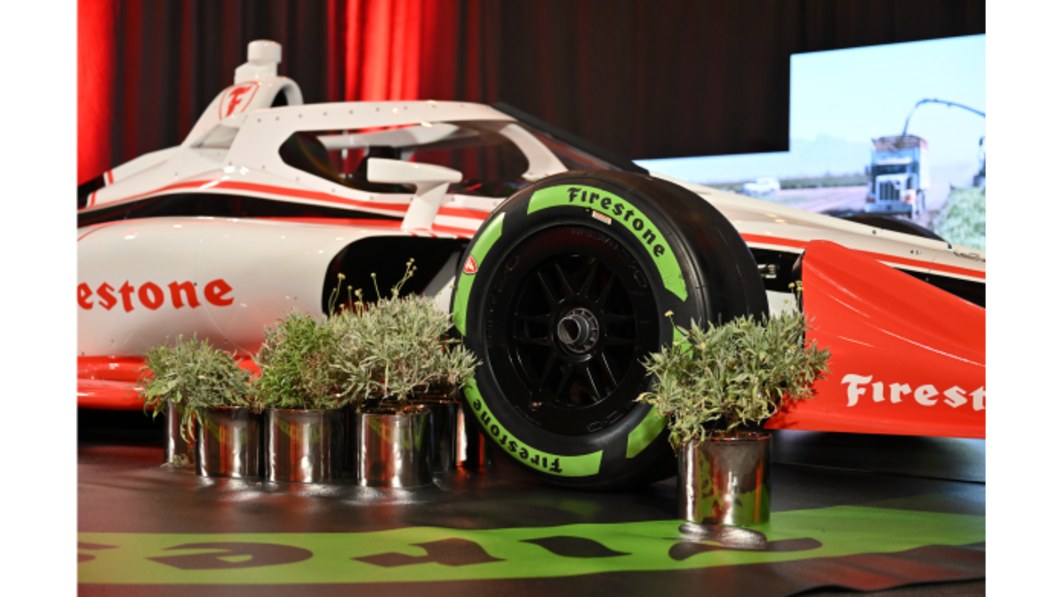
If you watched the IndyCar race in Nashville last weekend, you may have noticed some tires with green sidewalls adorning some of the cars. The new tires from Bridgestone, constructed in part with rubber harvested from the guayule shrub, making their motorsports debut. The company says the novel ingredient helps push them towards to goal of completely renewable tires and carbon neutrality.
Branded as Firestone Firehawks, they served as an alternative tire for the Big Machine Music City Grand Prix. The branding of Bridgestone’s U.S. subsidiary was important, as guayule is native to the American southwest and Mexico, and part of its sustainability appeal lies in the fact that it is local to the market. The tires are manufactured at Bridgestone’s Akron, Ohio, factory.
Guayule shrubs thrive in hot, arid climates and don’t require a lot of water to grow, a boon to these drought-stricken areas. In addition, guayule plants require less growing time before they can be harvested, just three years compared to the five years required of the para tree, the primary source for rubber today. Best of all, guayule does not compete with food crops, nor does it require additional equipment to grow; it can be harvested using existing conventional row-crop machinery.
According to Bridgestone, rubber from the guayule tree is very similar in composition to rubber from the para tree. Currently, says IndyCar, the guayule-derived rubber is used in sidewall construction, the area of the tire with the most natural rubber. Bridgestone is using the race season to test its efficacy and hopes to find more ways to incorporate it into its race tires for 2023.
On the other hand, the manufacturing of guayule rubber is more complex. It requires processing with solvent to separate the rubber from the rest of the plant, and purification of the material. It’s been 10 years since Bridgestone began researching guayule as an alternative rubber source. It maintains a 287-acre guayule farm at its research facility in Eloy, Arizona. Thus far, the company has invested $100 million into this research, and hopes to be carbon neutral and to have a tire made entirely of renewable materials by 2050.
